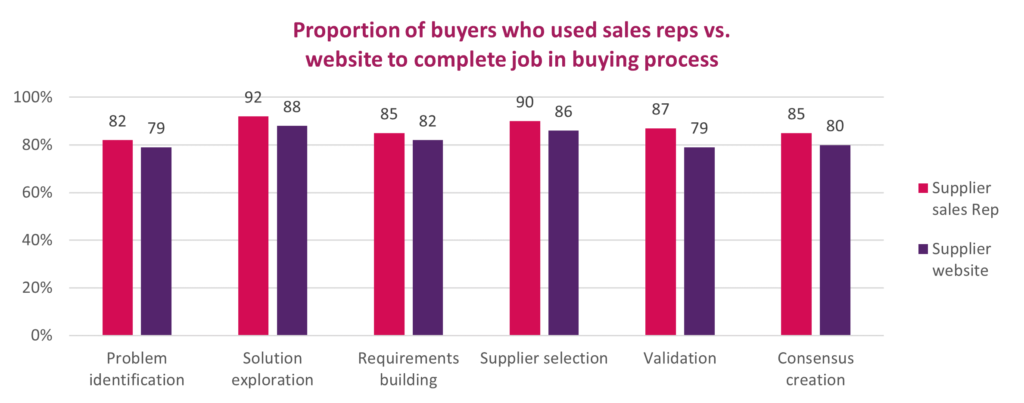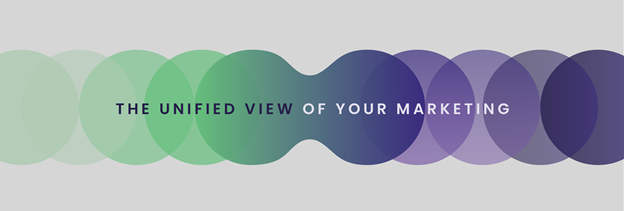Excellent Customer Experience in a Fragmented Omni-channel Landscape
March 15, 2021In today’s content and product-saturated marketplace, personalisation is key to standing apart from the competition. Digital is key for buyers and decision makers in the fast paced buying process. This does not only go for B2C consumers but also in B2B digital orientation and decisioning have nowadays become the standard. As digitalisation emerges, quantity of customer data soars but realising the true potential of an organisation’s customer data often still is a hassle.
Digitalisation & The omni-channel effect
Within the trend of personalisation, many organisations try to prepare for rising customer expectations. With the trends of personalisation and digital presence many organisations have attempted to optimally serve their customer needs and demands. Innovators and pioneers started of turning into omni-channel organisations. Where in the early millennium presence was prominently based in local points of sales, nowadays companies interact with customers via websites, emails, online adds, call centres, chatbots and socials channels varying from LinkedIn to TikTok.
The same trend of inserting more customer channels into the customer journey as well resulted into an uncontrolled customer applications landscape: both in the front-end and in the back-end. Not only more customer channels are popping up to the surface of many organisations, the applications applied across these channels as well have become much better to collect customer data.
However, this combination of a segregated customer omni-channel landscape with the quantity of data being collected as well results in data-silos across customer technology landscapes. These data-silo’s impedes companies’ ability to consistently communicate with their audience over its channels. Organisations lack the ability to utilise information collected through the one customer channel throughout other channels.
Winning with personalisation
A survey of Segment amongst 1,008 American consumers of 18 years and older clearly illustrates the importance of personalisation for organisations[1].
The lack of personalisation is frustrating consumers. 71 percent of the respondents express some level of frustration when their shopping experience is impersonal. There’s a lot to win for organisations by acquiring the competency to personalise as 44 percent of the consumers say that they will likely turn into repeat buyers after a personalised experience with a particular company.
Not only personalisation would turn buyers more loyal, they would stimulate more sales too. Nearly half of the surveyed group, 49 percent, purchased a product that they did not initially intend to buy after they received a personalised recommendation from a brand. 40 percent tells to have purchased something more expensive and 85 percent were happy with their purchase.
B2B procurement is evolving too
Expectations in personalisation are evolving in B2B environments too since the B2B buying process is moving digital as well. As consumers experience personalisation in their personal daily environment, they start demanding new standards in their professional life as well.
The B2B purchaser is becoming digital and is using a diversity of both online and offline channels for orientation during its journey. As a result, sales reps are no longer the channel to customers, but simply a channel. In each stage of the sales process the there is a pretty equal preference for online and offline orientation; even in the final decisioning phases. This means that almost half of the signals of the buyer during its journey are out of sight of the seller’s representatives. Covid-19 might have accelerated this trend exponentially over the last year[2].

Getting started is the first step to improvement
Of course, organisations are at different data-maturity levels. Yet, regardless of how far along a company is in its process of transformation, virtually every organisation has valuable customer data assets that could be put to better and more active use.
Customer expectations are changing in pretty every industry, but owning the data opens up opportunities to engage with target audiences. Organisations should seek for software overlays to link data silos over the different lines of business, making it available for use over the customer journey. As most teams already have inserted multiple types of channels over their customer journey to further drive personalisation the sense often is not in expanding channels.
Smarter use of yet available resources, systems and data allow teams to derive deeper and real customer insights, working towards a holistic customer profile. A centralised and openly accessible customer view over the business opens up opportunities as insights can be turned into actions, where the real value is being added over the customer journey. Integrating pertinent customer data and making it accessible across the business not only cuts down on duplicate information gathering and manual data entry, but can also lead to offering customers lower prices, greater convenience and better experiences.
Smaller experiments like pilots offer valuable learning paths for business teams. Businesses launching smaller pilot initiatives gather rich experiences that can be scaled up over the larger organisation. When making their start, organisations should pose themselves the following questions for a bright start.
- What customer data can we utilise and where does it reside?
- What external data could we acquire and what third parties should we collaborate with to create data-driven value?
- What skill sets and capabilities will we need and where can we find or develop them?
Customer Data Platforms represent an easy way to get started for most organisations. Customer Data Platforms (CDP) allow to easily connect to different customer data sources across an organisation’s landscape. They are diverse from legacy line of business apps as they don’t interrupt in most businesses’ core processes allowing to make a quick start. For each question, companies should carefully consider what they can realise with their own resources and where they reach out for external help.
Want to learn more about how why good use of data is important and how you can get started realising consistent experiences with a CDP? Then continue reading by clicking here!
[1] Segment, 2017, The 2017 State of Personalization Report.
[2] Gartner for Sales, 2019, CSO Update, The new B2B buying journey and its implication for sales.


